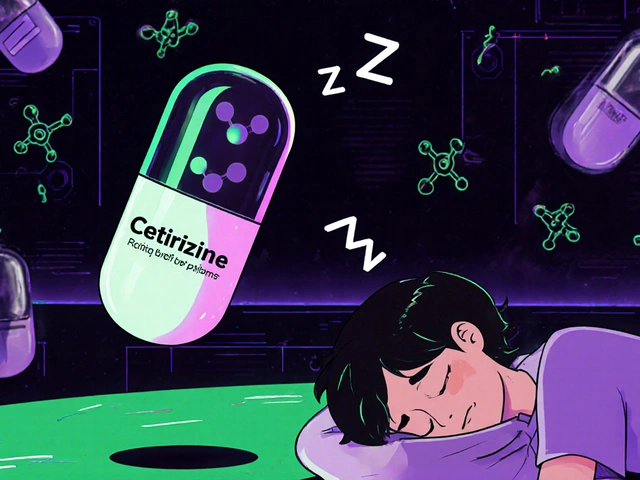Warts are more than just a skin annoyance. They’re a sign your body is fighting off a common virus - human papillomavirus, or HPV. You might see them on your fingers, under your toes, or even on your face. They look rough, raised, and sometimes clustered. For kids, they’re practically a rite of passage. For adults, they’re frustrating, embarrassing, and often stubborn. The good news? Most warts go away on their own. The bad news? Waiting can take years, and in the meantime, they can spread - to other parts of your skin, or to other people.
What Causes Viral Warts?
Not all warts are the same. They’re caused by different strains of HPV, and each strain likes a different part of the body. HPV type 1, 2, and 4 are the usual suspects behind common warts - those bumpy growths on your hands and fingers. If you’ve ever had a wart on your knuckle that looked like a tiny cauliflower, that’s likely one of these.
Flat warts are smaller, smoother, and often appear in rows. They’re usually caused by HPV types 3 and 10, and they love to show up on the face, arms, or legs - especially in kids and teens. You might not even notice them until you see a cluster.
Plantar warts grow on the soles of your feet. Because of the pressure from walking, they grow inward and can feel like a pebble in your shoe. These are often caused by HPV types 1, 2, 4, 60, and 63. They’re painful, and if you’ve ever avoided going barefoot in the gym or pool, you know why.
HPV enters through tiny cuts or breaks in the skin. Shared towels, sweaty locker rooms, walking barefoot in public showers - these are common ways it spreads. Once it’s in, your immune system usually clears it. But if your immune system is distracted - maybe from stress, lack of sleep, or just bad luck - the virus sticks around and forms a wart.
Do Warts Go Away on Their Own?
Yes. And that’s the most important thing to understand. Around 60 to 70% of viral warts disappear without any treatment within two years. That’s not a guess - it’s from large studies reviewed by dermatologists and published in clinical guidelines updated as recently as May 2025.
So why treat them at all? Three reasons: pain, spread, and embarrassment. A plantar wart can make walking uncomfortable. A cluster of flat warts on your face can make you self-conscious. And warts are contagious - you can spread them to your own other skin areas or to someone else. That’s why many people don’t wait.
But here’s the catch: treatment doesn’t always work faster than your immune system. Some treatments take weeks or months. And if you stop too soon, the wart comes back. Patience and consistency matter more than you think.
Topical Treatments: Salicylic Acid and Beyond
Salicylic acid is the most studied, most available, and most affordable option. You can buy it over the counter in liquids, gels, pads, or plasters. Concentrations range from 17% to 40%. It works by slowly peeling away the wart layer by layer.
How to use it right? Soak the wart in warm water for 10 minutes. Gently file the surface with an emery board or pumice stone - don’t share this tool. Then apply the acid directly to the wart. Cover it with a bandage if needed. Do this every day. It’s not glamorous, but studies show it works. One major study from 1976 found an 84% success rate for plantar warts with consistent use.
Other acids like trichloroacetic acid (TCA) are stronger and used by dermatologists. They burn off the wart tissue. But they’re not for home use. TCA can burn healthy skin too, so it’s applied carefully, often after scraping the wart first. Side effects? Pain, burning, and sometimes dark spots on the skin.
Imiquimod cream is different. It doesn’t destroy the wart - it wakes up your immune system to fight the virus. It’s often used when other treatments fail. You apply it a few times a week. It causes redness and swelling, which is actually a good sign - it means your immune system is reacting. It’s slow, sometimes taking 12 weeks, but it’s effective for stubborn cases.
Cryotherapy: Freezing Warts Off
Cryotherapy - freezing with liquid nitrogen - is one of the most common treatments in dermatology clinics. It’s quick, doesn’t require anesthesia, and works on most wart types.
The process: the doctor sprays liquid nitrogen onto the wart until it turns white and firm. The cold destroys the infected tissue. You’ll feel a stinging sensation, like a quick ice pack burn. After a few days, the wart turns into a blister, then falls off.
Studies show cryotherapy works about as well as salicylic acid for common warts. One 2023 review of seven studies found no statistically significant difference between the two. But here’s the key: timing matters. If you wait four weeks between treatments, success drops from 75% to 40%. The sweet spot? Treatments every 2 to 3 weeks. Most people need 3 to 6 sessions.
Home cryotherapy kits exist, but they’re weaker than what clinics use. They’re okay for small, flat warts, but not for thick plantar warts. Don’t expect miracles from a drugstore freeze spray.

More Aggressive Options: Lasers, Electrosurgery, and Surgery
If nothing else works, doctors turn to stronger tools.
Electrosurgery uses a tiny electric needle to burn off the wart. It’s done under local numbing. It’s fast - often one session is enough - but it leaves a small scar. It’s usually reserved for warts that have resisted everything else.
Laser treatment, like the VBeam pulse dye laser, targets the blood vessels feeding the wart. The wart turns dark purple or black right after treatment and falls off in 1-2 weeks. It’s expensive and not always covered by insurance, but it’s effective for stubborn warts, especially on the soles of feet.
Surgical removal - cutting the wart out - is rarely recommended. Why? Because it often leads to recurrence. The virus lives deeper than the surface. If you don’t remove all the infected tissue, the wart grows back. Plus, surgery leaves a noticeable scar. Most dermatologists avoid it unless the wart is huge or cancerous (which is extremely rare).
What Doesn’t Work - and Why
There are dozens of home remedies floating around: duct tape, apple cider vinegar, garlic, banana peels. Some people swear by them. But science doesn’t back them up.
Duct tape? One small study showed it might help, but later, larger studies found no real benefit over placebo. Garlic has antiviral properties, but applying raw garlic to your skin can cause chemical burns. Apple cider vinegar? No controlled trials prove it works.
Then there’s silver nitrate, cantharidin, and formic acid - all used in clinics at times. But the evidence is thin. The Royal Australian College of General Practitioners reviewed 15 different treatments and found only salicylic acid and cryotherapy had solid comparative data. Everything else? Mostly anecdotal.
Don’t waste money or time on unproven methods. Stick with what’s studied. Even if it’s slow, it’s more likely to work.
How to Prevent Warts From Spreading
Treating the wart is only half the battle. Stopping it from spreading is just as important.
- Don’t pick or scratch warts. You can spread HPV to other skin areas.
- Wear flip-flops in public showers, pools, and locker rooms.
- Don’t share towels, razors, or shoes with someone who has warts.
- Keep your feet dry. Moisture helps HPV thrive.
- Change socks daily, especially if you have plantar warts.
- If you use a pumice stone or emery board on a wart, throw it away after use - don’t reuse it.
Even if you’re treating the wart, these habits protect others and prevent new ones from forming.

When to See a Doctor
You don’t need to rush to a dermatologist for every wart. But see one if:
- The wart is painful and interferes with walking or using your hands.
- You’ve tried over-the-counter treatments for 12 weeks with no change.
- The wart is spreading quickly or multiplying.
- You have diabetes or a weakened immune system - you’re at higher risk for complications.
- You’re not sure if it’s a wart. Some skin cancers look like warts.
Dermatologists can confirm the diagnosis with a quick visual exam. In rare cases, they might take a small biopsy, but that’s only if something looks unusual.
What’s New in Wart Treatment?
Research is moving slowly, but there are promising directions. One big focus is combination therapy. The 1976 Bunney study found that using cryotherapy and salicylic acid together led to a 78% success rate - higher than either alone. That’s not a fluke. More doctors are now combining treatments intentionally.
Immunotherapy is also getting smarter. New creams and injections are being tested to trigger a stronger immune response against HPV. Some are even being tested for use in people with recurring warts who’ve tried everything.
But here’s the reality: there’s no magic bullet. The best treatment is still the one that fits your life. If you can stick to daily salicylic acid, go for it. If you’d rather get it done in the clinic, cryotherapy is just as good. The goal isn’t speed - it’s results without scars or pain.
Realistic Expectations
Wart treatment isn’t a one-and-done fix. It’s a process. You might need 3, 5, or even 8 sessions. You might feel discouraged after a month with no visible change. That’s normal.
Think of it like training for a marathon. You don’t see results on day one. You keep showing up. Wart treatment is the same. Apply the acid. Show up for the freezing. Don’t give up. Your immune system is working behind the scenes, even when the wart looks the same.
And remember: even if it comes back, it’s not your fault. HPV is everywhere. The fact that you’re trying to treat it means you’re already ahead of most people who just ignore it.







Comments
Jennifer Skolney
November 22, 2025 AT 00:18 AMUgh, I had plantar warts for 3 years. Tried everything. Salicylic acid? Meh. Cryotherapy? Painful but worked after 5 sessions. Just keep going, folks. 🙌